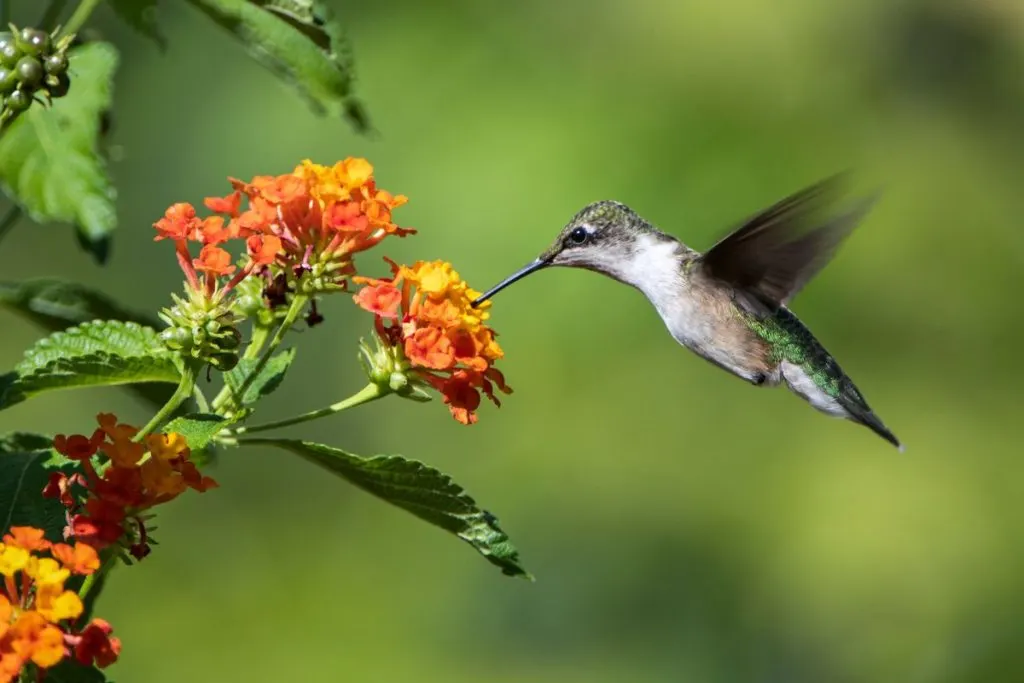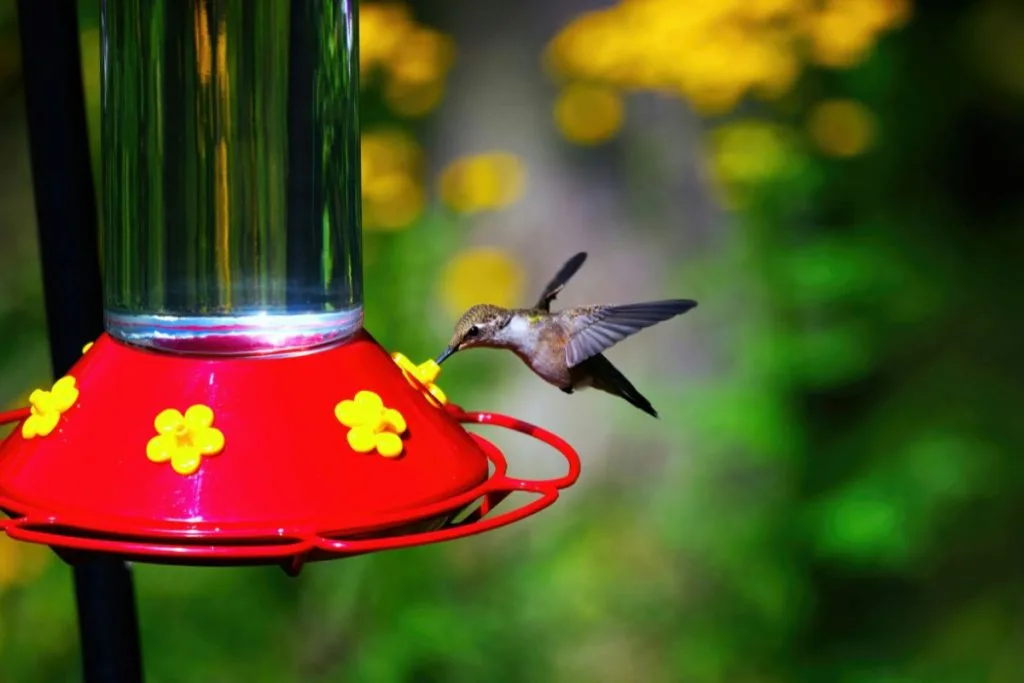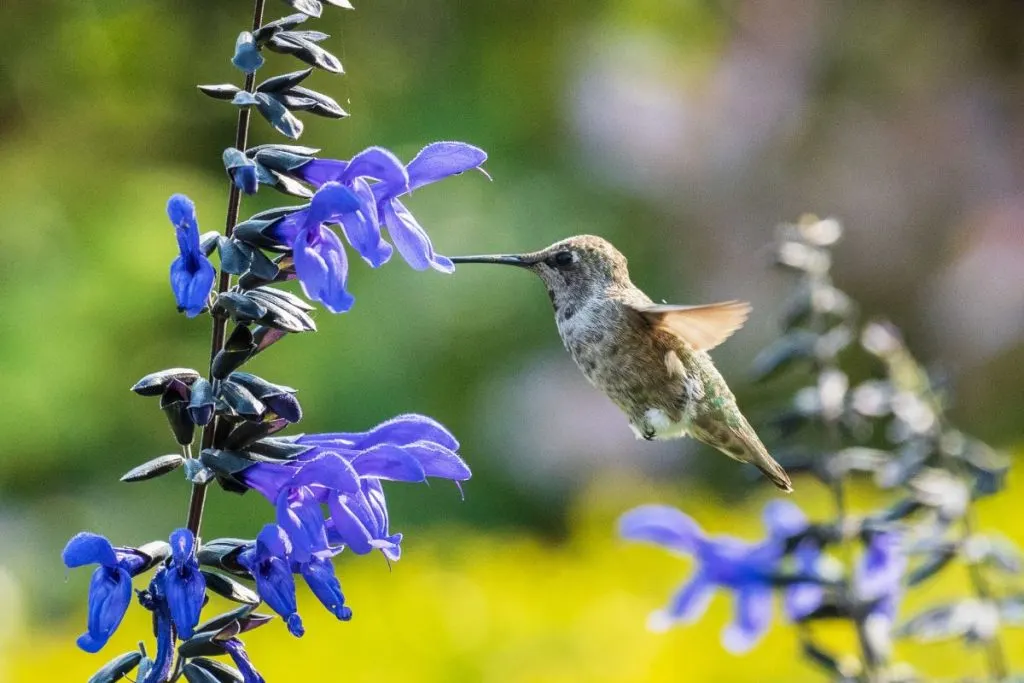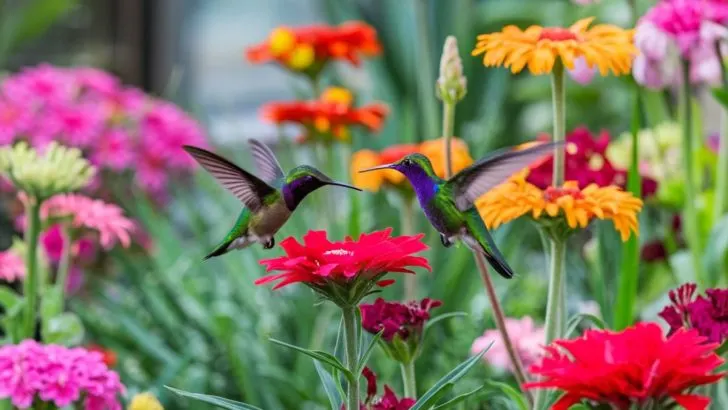Welcome, fellow bird enthusiasts! Imagine waking up to the delightful buzzing of hummingbirds right in your very own backyard. These little aerial acrobats, with their iridescent plumage and zippy flight, are not just a treat to observe.
They also indicate a healthy garden ecosystem. But here’s the million-dollar question: how do you tempt these feathered gems to set up shop and build their delicate nests amidst your blooms and branches?
The key lies in understanding that luring hummingbirds to nest requires more than just flashy flowers and nectar feeders. It’s all about creating a haven that caters to their specific needs and preferences.
By providing the right habitats, food sources, and even some DIY nesting materials, you can turn your backyard into a paradise they wouldn’t want to leave. Ready to transform your garden into a hummingbird haven?
Let’s dive into the details!
Understanding Hummingbird Habits and Preferences

Before you start your transformation project, it’s crucial to get acquainted with the fascinating quirks of hummingbird habits. These tiny birds aren’t just aimlessly fluttering around; they are on a mission.
Understanding their preferences can help you create an environment that meets their needs—encouraging them to settle down and raise their young.
Know Their Neighborhood
Hummingbirds have specific geographical ranges where they prefer to nest. If you live east of the Mississippi, for instance, your best bet is to charm the ruby-throated hummingbirds during the spring.
Meanwhile, folks on the western side can expect different species such as the broad-billed and black-chinned hummingbirds to drop by, particularly around April.
Anna’s and broad-tailed hummingbirds, on the other hand, might decide to stick around as late as November. Know your local avian calendar, and you’ll know when to roll out the red carpet.
Create the Right Ecosystem

Your backyard might already boast a riot of colors with its array of flowers, but are they the right ones? Native plants are not just eco-friendly; they are practically hummingbird magnets.
These plants provide nectar and insects, crucial components of a hummingbird’s diet, especially for their young ones.
Additionally, native vegetation naturally adapts to your environment, requiring less maintenance, which means you’ll spend more time bird-watching and less time gardening.
Cozy Corners for Nesting
Despite their carefree demeanor, hummingbirds are quite picky about their nesting spots. They shy away from overly pruned landscapes and seek solace in gardens that provide ample hiding spots from potential predators.
Consider adding tall shrubs, climbing vines, and substantial trees that offer both a safe haven and a vantage point. A garden with secluded, leafy corners is the real estate of choice for these feathered architects.
Crafting the Perfect Hummingbird Habitat

Now that we’ve uncovered the hummingbird playbook, it’s time to implement a few specific strategies to make your garden welcoming and nest-worthy.
Provide Shelter and Perches
While some hummingbirds might get creative with your wind chimes or garden sculptures, they will truly appreciate some natural shelter.
Invest in planting trees and shrubs that provide both concealment and perches. Think of these plants as tiny observation decks where hummingbirds can safely monitor their territory and protect their brood.
Selecting the Right Trees
Different species have varying preferences for their nesting trees. For instance, Anna’s hummingbirds favor broad, low-branched trees such as sycamores and eucalyptus, while broad-tailed hummingbirds choose the dense cover of conifers like spruces and pines.
Meanwhile, if you’re hoping to attract the ruby-throated variety, consider hardwoods like birches and oaks. Planting a mix of these can increase your chances of hosting diverse species.
Nature-Inspired Perches
Beyond trees, think about incorporating climbing plants like clematis or honeysuckle that offer a natural lattice for hummingbirds to roost. They love having vantage points to scout for threats and potential rivals. Plus, these plants often provide additional nectar sources—bonus points for being multi-purpose!
Ensure Readily Available Food and Water

Food and water are the backbone of any thriving hummingbird habitat. Without them, your garden is merely a pit stop rather than a permanent residence.
Nectar and Insects Galore
Hummingbirds have a sweet tooth, but their babies? Not so much. Plant a variety of nectar-rich flowers and avoid using pesticides, allowing these avian families to snack on the insects and spiders in your garden.
Installing a few hummingbird feeders filled with a homemade sugar solution can offer supplemental nutrition, keeping those energy levels high for the rigorous task of parenting.
Water for Refreshment and Recreation
A backyard isn’t truly inviting without a proper bird bath or water mister. Hummingbirds love nothing more than a good splash under gentle mists.
Consider a splash pad under a tree canopy or even a shallow fountain to keep them cool and clean. This little oasis can be the deciding factor for a fatigued hummingbird in search of the perfect nesting site.
Offer Natural Nesting Materials
Although hummingbirds are adept architects, providing them with some building blocks can help them choose your yard as their prestigious building site.
Items like plant down, bud scales, and other soft, fibrous materials can greatly entice them. You can even leave out tiny bits of cotton or strands of soft yarn for them to incorporate into their intricate nests. Imagine giving a hummingbird the ultimate starter pack for its cozy, walnut-sized home!
Maintaining a Hummingbird-Friendly Garden Year-Round

Creating a hummingbird sanctuary is a joyful commitment. It requires adapting to seasonal changes and understanding migratory patterns. Track your local hummingbird populations and adjust your garden accordingly to keep it inviting year-round.
Seasonal Adjustments
In colder months, ensure your garden still offers some semblance of food and shelter. Evergreen plants, freeze-proof feeders, and sheltered areas can provide essential resources during these times. Remember, the goal is to offer a space that feels safe and nurturing, regardless of the season.
Understanding Migration Patterns
Keep a calendar of the migratory patterns in your area. This knowledge allows you to prepare your garden for their arrival and departure each year. Planning ahead increases your odds of hosting these beautiful birds and witnessing the marvel of their nesting rituals.
In conclusion, creating a hummingbird-friendly yard is more than just planting a few flowers. It involves understanding their habits, providing their essentials, and offering a safe, beautiful environment they’d be proud to call home.
So roll up your sleeves, grab your gardening gloves, and get ready to welcome these enchanting creatures into your life.
With a little effort and a lot of love, you’ll have hummingbirds nesting in your backyard in no time—making every morning a delightful dance of color and life.

